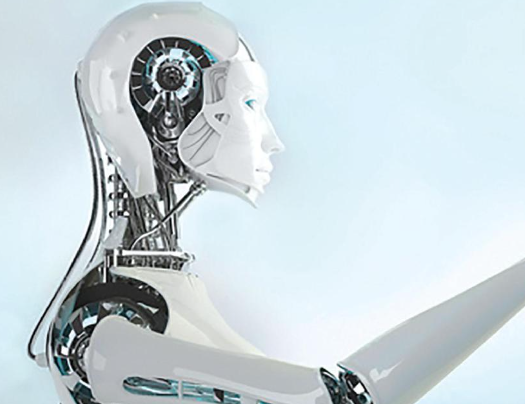Exploring the Path to Healthy Development of the AI Industry
-
This year, generative AI technology has advanced rapidly, expanding application scenarios and improving industrial ecosystems. While bringing new opportunities for economic and social development, it has also raised issues such as the spread of false information, infringement of personal data rights, data security, and bias.

Strengthening Regulation to Guide Industry Standardization
Recently, national-level regulatory policies for AI have been intensively introduced. On April 28, the Political Bureau of the CPC Central Committee emphasized the need to prioritize the development of general AI, foster an innovative ecosystem, and address risks. On July 13, the Cyberspace Administration of China, along with other departments, released the Interim Measures for the Management of Generative AI Services, proposing measures to encourage innovation while implementing inclusive, prudent, and tiered regulation.
Local governments have also introduced policies to promote standardized AI development. Beijing proposed exploring inclusive and prudent supervision of the AI industry, advancing regulatory innovation, conducting safety assessments, and promoting algorithm registration. Shenzhen suggested establishing a transparent AI regulatory system, implementing risk prevention mechanisms in areas like cybersecurity, data security, and ethics, and guiding healthy development of AI-related enterprises.
It is a global consensus that AI is a double-edged sword. The 2023 AI Index Report by Stanford University noted that the number of AI-related laws passed globally increased from just 1 in 2016 to 37 in 2022 across 127 countries.
"We must strengthen AI safety governance, addressing data security, cybersecurity, algorithm security, and computing power security to ensure AI's positive economic impact and develop responsible AI industries," said Zhu Minghao, Executive Director of the China High-End Manufacturing Research Center at Beijing Jiaotong University.
In reality, developing large models involves more than just data, computing power, and algorithms—safety concerns must also be addressed during optimization. Zhou Hongyi, founder of 360 Group, likened AI models to a double-edged sword, noting that their safety issues now extend beyond content security.
Accelerating Application Scenarios and Collaborative Innovation
Currently, large models are still in a phase of rapid change and innovation. To seize opportunities and leverage their advantages, in addition to regulation and risk prevention, innovation must be accelerated to deploy them in more business scenarios.
"Current investments are training 'elementary students,' not 'graduate students.' In this scenario, no single entity has sufficient computing power or data," said Huang Tiejun, Director of the Beijing Academy of Artificial Intelligence and Professor at Peking University, at the 2023 China Internet Conference. He emphasized the need for a systematic approach, shifting competition from models themselves back to algorithms and technology.
Currently, the explosive growth of large models and generative AI is accelerating the implementation of intelligent management, production scheduling, manufacturing, warehousing, diagnostics, and services. For instance, AI-powered virtual fitting can match a single garment with multiple real models through automatic portrait enhancement and precise local adjustments, preserving clothing details while adapting to various body postures—reducing garment image production time from days to minutes or even seconds. In railway systems, where manual inspections are labor-intensive and challenging, AI trained on train image data combined with optimal object detection and image recognition frameworks enables small-sample fault identification and localization, achieving automatic and accurate fault classification. Meanwhile, a 256-million-parameter meteorological model, learning from 40+ years of weather records and 200TB of training data to uncover patterns and correlations among weather elements, has achieved a 20% higher accuracy than the European Centre for Medium-Range Weather Forecasts for 7-day predictions, with a 10,000-fold speed improvement.
Li Wei, General Manager of Huawei Cloud's Big Data and AI, stated that core business systems across many industries are being transformed by large-model capabilities, predicting that 50% of core industry applications will revolve around such capabilities within two years, reshaping the entire industrial landscape.
Huang Tiejun emphasized the need to shift from 'numerous models' to 'refining large models,' noting severe fragmentation in the field and advocating open-source collaboration as the only viable path for iterative innovation. Wang Weiwei, a senior technical expert at Alibaba DAMO Academy, suggested that long-term success lies in expanding data volume, improving data quality, and reducing model size to facilitate scalable deployment.
Additionally, the application of large models in smart devices is gaining traction. On July 21, a joint policy by seven Chinese ministries, including the NDRC and MIIT, encouraged research institutions and market players to adopt domestic AI technologies to enhance electronic products' intelligence and human-computer interaction.
Recent reports about Huawei's upcoming HarmonyOS integrating AI large-model capabilities have sparked significant interest, with rumors of 'large-model smartphones' on the horizon. IDC predicts that by 2026, nearly 50% of processors in China's terminal devices will feature AI engine technology, positioning smart devices as another key frontier for large-model applications.
